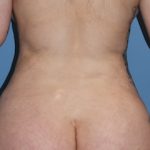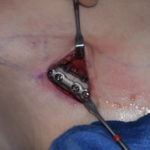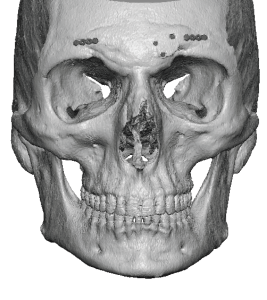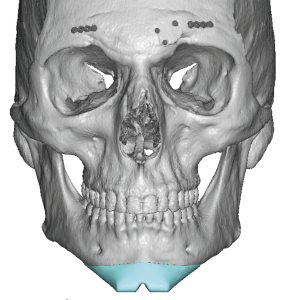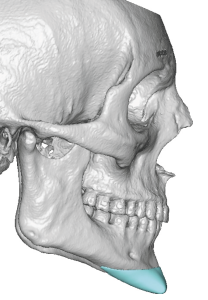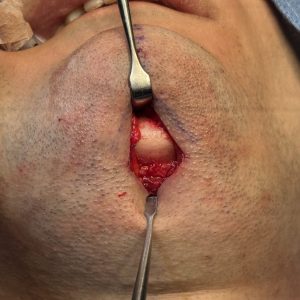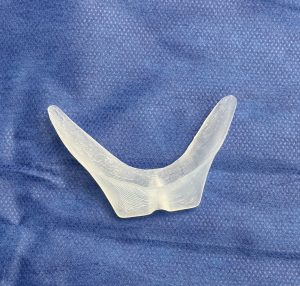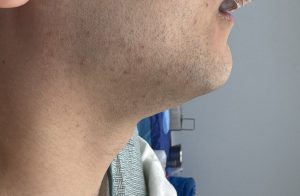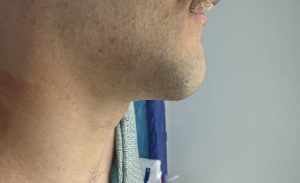Background:
Off-the-shelf chin implants are widely available and generally effective for patients seeking minor horizontal chin augmentation while preserving their natural shape. However, these standard implants often fall short in cases requiring more complex, multidimensional enhancements—especially when addressing uncommon chin deficiencies.
A particularly challenging problem is vertical chin deficiency. This condition involves either a purely vertical shortness or a need for vertical lengthening that exceeds horizontal projection. While a vertical-lengthening implant exists, it typically provides an oblique 45-degree augmentation and features a rounded design—making it unsuitable for patients desiring a more defined or square chin.
Custom chin implants, on the other hand, offer precision and versatility. They can be designed for any combination of vertical and horizontal augmentation or even for isolated vertical elongation.
Surgical Considerations: Soft Tissue Tolerance
A key challenge in vertical chin lengthening lies in soft tissue closure. Whether the implant is placed via a submental or intraoral approach, the entire soft tissue chin pad must be released to accommodate the implant. Once the implant is positioned, the released soft tissue must then be closed over the added volume. Vertical elongation essentially “steals” soft tissue, potentially leading to tight closures or, in some cases, incomplete closure.
From my experience, 7mm is the upper limit for vertical elongation using an implant without compromising soft tissue closure. This stands in contrast to horizontal augmentations, where significantly greater projection can be achieved with less concern for soft tissue limitations.
Patient Case: Remasculinization After Feminization
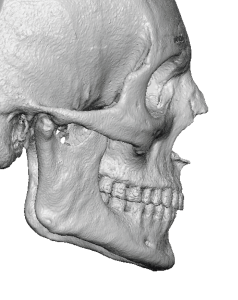
Design:
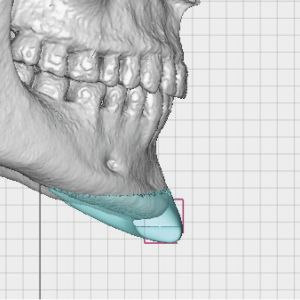
-
7mm of vertical lengthening
-
4mm of horizontal projection
-
A square-shaped contour
Additionally, the patient initially requested a vertical chin cleft, which was incorporated into the design - the vertical lengthening was the key elememnt in the design.
Procedure:
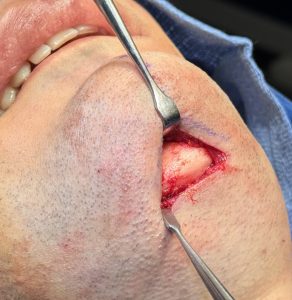
T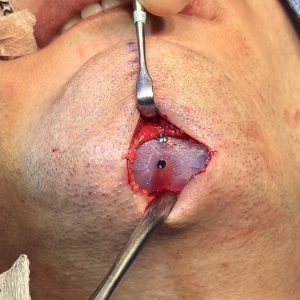
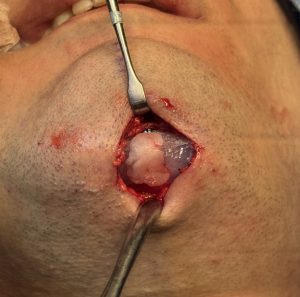
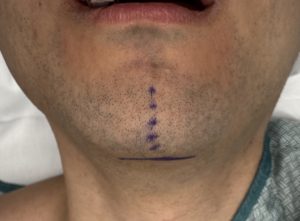
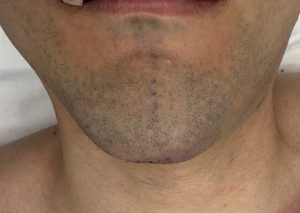
Broader Insights
Chin reduction is often a component of lower-third facial feminization, typically involving a reduction in vertical height and width. Sometimes, the horizontal dimension is altered as well. When detransitioning, restoring the original chin structure requires reversing these changes—making custom implant design the most effective and predictable option.
In the absence of a pre-reduction 3D CT scan, exact dimensional restoration can’t be precisely calculated. Nonetheless, custom implants provide the necessary control and adaptability for optimal outcomes.
Key Takeaways
-
Custom chin implants are essential when standard implants fall short, particularly in multidimensional or vertical corrections.
-
The need for primary vertical lengthening and a square chin shape strongly indicates the use of a custom design.
-
A growing modern indication for custom chin implants is the restoration or remasculinization of the chin following facial feminization procedures.
Dr. Barry Eppley
World-Renowned Plastic Surgeon

